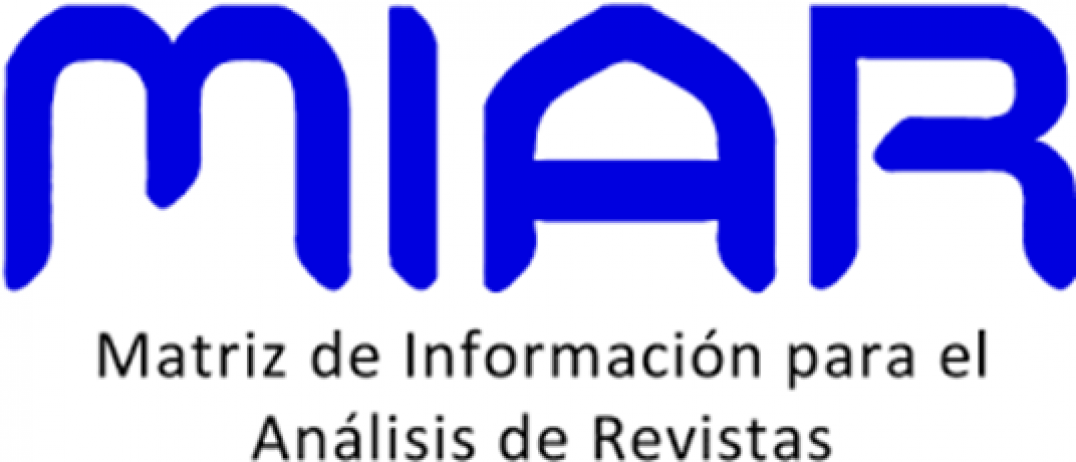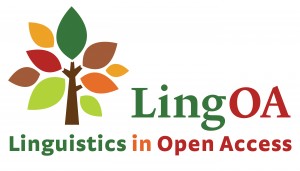Gesture as a learning carrier in the foreign language classroom: Towards an embodied learning
DOI:
https://doi.org/10.32870/vel.vi18.163Keywords:
Gestures, Embodied learning, Cognition, Language teaching, MultimodalityAbstract
Movement is our first teacher. From birth, humans learn by gesture. However, even today, a majority of students “learn” a foreign language by sitting at their desks, contradictory to genuine communication through sharing an expression, language is extracted from its context and bodily dimension. Instead, it is completely theorized and transmitted to static beings.
In this article, we present the link between gestures and speech as well as cognitive processes involving corporeality. This leads us to potential didactics proposals that embody foreign languages. The gestures, then, would take their place, and learners would master their language acquisition through physical integration and situated cognitive processes. Our research is influenced by theories, such as mirror neurons (Rizzolati & Sinagaglia, 2008), embodied cognition (Varela, Thompson, Rosch et Alva,1993, Lakoff, 1999, 2000), multimodality (Coletta, 2004, 2005, Azaoui, 2014) and kinaesthesic education (Dennison, 2010). These theories are derived from the fields of cognitive science, language didactics and cognitive psychology. We will respond the following questions : What relationship does gesture and cognition have ? Can the inclusion of the body, specifically gestures, be used for educational purposes? What cognitive benefits can integration of gestures bring into foreign language learning?
Downloads
Metrics
References
Acredolo, L., et Goodwyn, S., (1985). Symbolic gesturing in language development : a case of study. Human development, vol. 28, p 40-49
Acredolo, L., et Goodwyn, S., (1998). Sign language among hearing infants : the spontaneaous development of symbolic gestures.In Volterra & Erting (eds). From gesture to language in hearing and deaf children. Gallaudet, university press. P. 68-78
Aden, J., (2017). Les langues énactées, dans le dossier : Un corps pour apprendre. Coordonné par David Piot et Nicolas Perrin. Revue Éducateur nº4.
Alibali, M.W., (2001). Gestures play a role in thinking for speaking. In C. Cavé, I Guaitella et S. Santi, Eds, Oralité et gestualité. Interactions et comportements multimodaux dans la communication : 407-410.
Allen, L., (1995). The effects of emblematic gestures on the development and access of mental representation of French expressions, The modern language journal, V.79, p.521-529.
Amaiwa, S., (2001). The ripple effects and the future prospects of abacus learning site: http://www.shuzan.jp/english/brain/brain.html
Aristote, (536a). Histoire des animaux IV, 9 536a 30-31, cité dans Labarrière Jean-Louis. Aristote et la question du langage animal. In: Mètis. Anthropologie des mondes grecs anciens, vol. 8, n°1-2, 1993. pp. 247-248.
Asher J., (1978). Learning another language through action: The complete Teacher’s guidebook in TESOL Quarterly Vol 12, No 2 pp. 204-206. Réédition (5th ed), Los Gatos, CA sky oaks production, 1996.
Azaoui, B., (2014). Co-construction de normes scolaires et contextes d’enseignement. Une étude multimodale de l’agir professoral. Thèse de doctorat. Éducation. Université Paul Valéry. .
Beilock, S., Lyons, I., Mattarella-Micke, A., Nusbaum, H, et Small S., (2008). Sports experience changes the neural processing of action language. Proceedings of the national Academy of Sciences, 105 (36), 13269-13273. DOI: 10.1073/pnas.0803424105
Beilock, S. et Goldin-Meadow, S., (2010). Gesture changes thought by grounding it in action Psychol, Sci 21:1605-10.
Bilbrough, M., (2017). A gesture-based approach to teaching English as a foreign language. Department of English philology, The University of Seville.
Broaders, S., Wagner Cook, S., Mitchell, Z., et Goldin-Meadow S., (2007). Making children gesture reveals implicit knowledge and leads to learning. J Exp Psychol Gen. Nov, 136 (4), pp. 539-550.doi: 10.1037/0096-3445.136.4.539.
Calbris, G., (1985). Description pour le français langue étrangère, dans Langue française Geste et Parole, n°68, sous la direction de J.C. Beacco.
Church, RB., Ayman-Nolley, S., et Mahootian S., (2004). The role of gesture in bilingual education: Does gesture enhance learning? Int J. Bilingual Educ. Bilingualism 7:303-19.https://doi.org/10.1080/13670050408667815
Coletta, J.M., (2004). Le développement de la parole chez l’enfant âgé de 6 à 11 ans. Corps, langage et cognition. Sprimont : Mardaga.
Coletta, J.M, (2005). Communication non verbale et parole multimodale. Quelles implications didactiques ? Le français dans le monde. Recherches & Applications, numéro spécial juillet, pp.32-41.
Cook, S.W., Yip, T., et Goldin-Meadow S., (2012). Gestures, but not meaningless movements, lighten working memory load when explaining math, Language and cognitive processes, 27, 594-610. DOI: 10.1080/01690965.2011.567074
Cosnier, J., (1977). Communication non verbale et langage, In Psychologie médicale, 9, 11, pp.2033-2047.
Denjean, C., (2013). Le ventre notre deuxième cerveau, documentaire, Scientifilms, http://www.film-documentaire.fr/4DACTION/w_fiche_film/39643
Dennison, P., (2010). Apprendre par le mouvement, Sully, Vannes.
Engelkamp J., et Krumnacker, (1980). Imaginale und motorische Prozesse beim Behalten verbalen Materials. Zeitschrift für experimentelle und angewandte Psychologie 27, pp.511-533.
Engelkamp, J., et Zimmer, H.D., (1985). An attempt to distinguish between kinematic and motor memory components, Acta Psychologica, Vol 58, Issue 1, pp.81-106. https://doi.org/10.1016/0001-6918(85)90036-8.
Ekman, P., et Friesen, W., (1969). The repertoire of non verbal behavioral categories: origins, usage and coding. Semiotica, 1(1): 49-98,
(repris in Kendon A., (1981)(ed), non verbal communication, interaction and gesture. The Hague, Paris-New York, Mouton: 58-105)
Gamba-Kresh, T., (2021), Le geste comme vecteur d'apprentissage en classe de langue étrangère: vers un apprentissage incarné de la langue. Thèse de doctorat, Université Montpellier 3, à paraitre.
Garcia, J., (1999). Sign with your baby : How to communicate with infants, Sign2me Early Learning/ Northlights communication.
Gardner, H., (2008). Les intelligences multiples : La théorie qui bouleverse nos idées reçues, Retz, Juin 2008.
Gaudez, C., et Aptel, M., (2008). Les mécanismes neuropsychologiques du mouvement, base pour la compréhension du geste, Le travail humain 4 (Vol.71), p.385-404. DOI 10.3917/th.714.0385
Gattegno, C., (1963). Teaching Foreign Languages in schools: The Silent Way. Reading, UK: Educational Explorers.
Goldin-Meadow, S. et Iverson, J., (1998). Why people gesture when they speak? In Nature, Vol 396, 228.https://doi.org/10.1038/24300
Goldin-Meadow, S., (2016). What the hands can tell us about language emergence. Psychomodic bulletin and review, 10.3758.
Goldin-Meadow, S., Fay, N., Lister, C., et Ellison, T.M., (2014). Creating a communication system from scratch: Gesture beats vocalization hands down. frontiers in psychology (Language science), 5, 354.
Goldin-Meadow, S., (2010a). When gesture does and does not promote learning. Language and cognition, 2 1-19.
Goldin-Meadow, S., (2010b). Le rôle des gestes dans la création et l’acquisition du langage, Enfance, 3 239-255.
Goldin-Meadow, S., et Alibali, M.W.,(2013). Gesture’s role in speaking, learning and creating language. Annual review of psychology, 123 448-453.
Hauk, O., Johnsrude, I., et Pulvermüller, F., (2004). Somatotopic representation of action words in human motor and premotor cortex. Neuron. Jan 22;41(2):301-7. doi: 10.1016/s0896-6273(03)00838-9. PMID: 14741110.
Jousse, M., (1969). L’anthropologie du geste. Paris, Les éditions Resma.
Krauss, RM., Dushay, R., Chen, Y., et Rauscher, F., (1995). The communication value of conversational hand gestures. J.Exp. Soc. Psychol. 31: 533-52.
Kendon, A., (2004). Gesture. Visible action as utterance. Cambridge (UK), Cambridge university press.DOI: https://doi.org/10.1017/CBO9780511807572
Lakoff, G., (1999). Philosophy In The Flesh: the Embodied Mind and its Challenge to Western Thought. Basic Books.
Lakoff, G., (2000). Where Mathematics Comes From: How the Embodied Mind Brings Mathematics into Being. Basic Books. (ISBN 0-465-03771-2).
Lapaire, J.R., (2013). Gestualité co-grammaticale : de l’action corporelle spontanée aux postures de travail métagestuel guidé. Maybe et le balancement épistémique en anglais in Langages revue trimestrielle 192, Le vécu corporel dans la pratique d’une langue. Ed Larousse. Armand Colin.DOI : 10.3917/lang.192.0057
Lapaire, J.R., (2018). La kinéflexion: produire, exhiber, partager des actes vivants de pensée. In Bottineau D. & Grégoire M. (Eds), Langage et énaction : corporéité, environnements, expériences, apprentissages, Intellectica, 68, (pp.193-224).
Lepoire-Duc, S. et ULMA D., (2010). Enseigner le verbe en français aujourd’hui : Enjeux et tensions, Synergies, Gerflint, France n6, pp9-15.
Leroi-Gourhan, A., (1985). Le geste et la parole. Technique et langage, Paris, Albin Michel, 1964 (p.216), cité dans CALBRIS G., dans “Langue française, Description pour le français langue étrangère, Geste et Parole, n°68, sous la direction de J.C. Beacco.
Macedonia, M., (2014). Bringing back the body into the mind: gestures enhance word learning in foreign language. Frontiers in psychology, 5:1467.
Maxwell, W., (2001). Evaluating the effectiveness of the Accelerative Integrated Method for teaching French as a second language. Master’s thesis, University of Toronto (OISE/UT), Toronto, Ontario, Canada, 2001.
Mc Neill, D., (1992). Hand and mind. Chicago: University of Chicago Press.
Mc Neill, D., (2005) Gesture and thought. Chicago: University of Chicago Press.
Ping, R., et Goldin-Meadow, S., (2010). Gesturing saves cognitive resources when talking about non present objects. Cogn Sci. 34(4), 602–619. https://doi.org/10.1111/j.1551-6709.2010.01102.x
Pulvermüller, F., (2005). Brain mechanisms linking language and action. In Nature Reviews, pp. 576-582.
Rizzolatti, G., et Sinigaglia, C., (2008). Les neurones miroirs, Paris, Odile Jacob.
Stevick, E., (1974). Review of teaching foreign languages in the schools: The silent way by Caleb Gattegno, in TESOL Quartetly Vol8 No3, Sept 1974.
Stout, D., et Chaminade. T., (2012). Stone tools, language and the brain in human evolution, philosophical transactions of the royal society B, 367, 75-87.doi: 10.1098/rstb.2011.0099
Stout, D., Passingham, R., Frith, C., Appel, J., et Chaminade, T, (2011). Technology, expertise and social cognition in human evolution”, European journal of neuroscience, 33, 1338, (Cités dans « A grammar of action to formalize paleolithic knapping ». https://doi.org/10.1111/j.1460-9568.2011.07619.x
Tellier, M., (2006). L’impact du geste pédagogique sur l’enseignement/apprentissage des langues étrangères : Etude sur des enfants de 5 ans. Linguistique. Université Paris-Diderot. Paris VII,
Tellier, M., (2010). Faire un geste pour l’apprentissage : Le geste pédagogique dans l’enseignement précoce. C. Corblin L’enseignement des langues étrangères à l’école. L’Harmattan, coll. « Enfance & Langages », 31-54.
Thomas, L., et Lleras A., (2007). Moving eyes and moving thought : On the spatial compatibility between eye movements and cognition. Psychomotic Bulletin and Review, 14, 663-668.
Thomas L ., et Lleras A., (2009). Swinging into thought : Directed movement guides insight in problem solving. Psychomotic Bulletin and Review, 16, 719-723.
Turchet, P., (2009). Le langage universel du corps, Les éditions de l’homme, Montréal.
Varela, F., Thompson, E., et Rosch, E., (1993). L’inscription corporelle de l’esprit, sciences cognitives et expérience humaine. Seuil col La couleur des idées.
Vincent-Smith, B., (2013). Education et système des neurones miroirs : Le système miroir neuroéducatif , sur le site de l’Institut Neurodidactique International : http://www.neuroeducation-ini.fr/article-de-brigitte-vincent-smith-le-systeme-miroir-neuroeducatif/

Published
Versions
- 2024-11-08 (2)
- 2022-06-21 (1)












